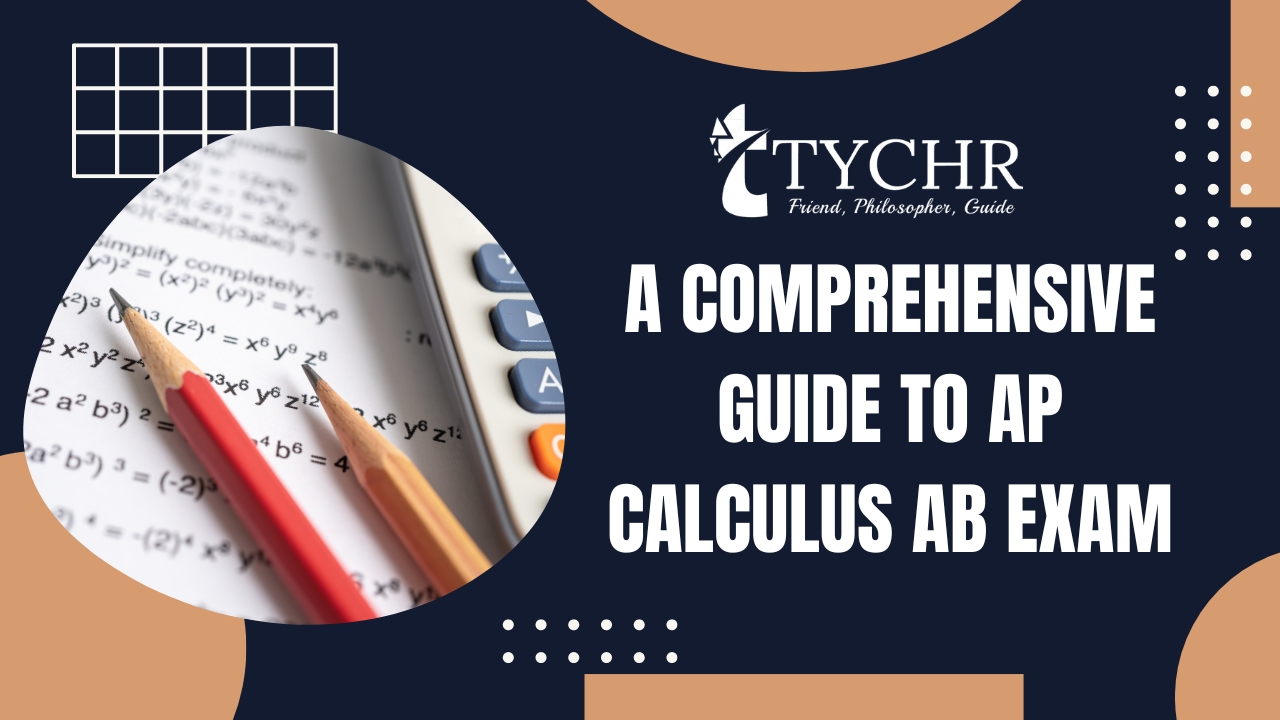The College Board offers AP Calculus AB in addition to AP Calculus AB as its two AP Calculus courses. The less difficult of the two courses, AP Calculus AB, builds on what students gained in AP Calculus AB. However, this does not mean that AP Calculus is easy as well. The AP Calculus AB exam is a rigorous test that assesses students’ proficiency in calculus concepts and their ability to apply them to solve problems. Preparing for this exam can be overwhelming, especially with the vast amount of material to cover.
However, with proper planning, practice, and a clear understanding of the exam format, you can improve your chances of success. In this blog post, we will provide a comprehensive guide to the AP Calculus AB exam, covering everything from test format and scoring to study tips and practice resources. Whether you’re a first-time test taker or a seasoned pro, this guide will provide valuable insights and strategies to help you excel on the AP Calculus AB exam.
The Exam Format and Its Content:
The AP Calculus AB exam is 3 hours long which happens to be one of the longest AP exams, broken down in two sections. The first section is a multiple-choice and the second is a free-response section. They’re essentially 2 sections with a Part A and Part B in each, respectively. You will be allowed to use a graphing calculator only on Part B of Section 1. Calculators are not allowed in the second section.
Part A consists of 45 multiple-choice questions that assess students’ knowledge of Calculus concepts and procedures. These questions may require students to interpret and analyze graphical, numerical, and algebraic representations of functions and their derivatives, integrate functions, solve differential equations, and apply concepts of limits, continuity, and convergence.
Part B consists of six questions that require students to respond in paragraph form, using calculus to solve problems and demonstrate their understanding of Calculus concepts and procedures. These questions may involve applications of integration, differential equations, limits, and series
| Section | Time Duration | About the questions |
| Multiple Choice (50%) | 60 minutes (Part A) | This section has 30 multiple choice questions. Usage of calculators is not permitted in the section. |
| 45 minutes (Part B) | This section has 15 multiple choice questions. Usage of calculators is permitted in this section | |
| Free Response (50%) | 30 minutes (Part A) | This section has 2 free response questions.
Usage of calculators is permitted in the section. |
| 60 minutes (Part B) | This section has 4 free response questions. Usage of calculators is not permitted in the section.
Various steps in the solving of each problem are given partial credit. A graph is typically required for one of the questions.
|
On the AP Calculus AB exam, each unit or topic is allocated a specific weightage that reflects its significance. As a result, the exam may have more questions related to some topics than others, as the distribution of questions is not equal. The College Board recommends a sequence of ten units for the course, with each unit given a particular weightage on the exam.
| Unit Name | Percentage weightage |
| Limits and Continuity | 10%-12% |
| Differentiation: Definitions and Fundamentals Properties | 10%-12% |
| Differentiation: Composite, Implicit and Inverse Functions | 9%-13% |
| Contextual Applications of Differentiation | 10%-15% |
| Analytical Applications of Differentiation | 15%-18% |
| Integration and Accumulation of Change | 17%-20% |
| Differential Equations | 6%-12% |
| Applications of Integration | 10%-15% |
The table above shows that the majority of the questions from the multiple choice exam are focused around Integration and Accumulation of Change first, and then Infinite sequences and series. Therefore, while you prepare for your exam, you can consider making these concepts a priority so it guarantees you those marks. This subject is essentially Calculus, so, between differentiation and integration, integration is weighed more in terms of percentage.
In this part, we’ll be providing you some basic tips for you to prepare before the examination:
- A Properly Maintained Calculus Notebook: Your Calculus notebook has the potential to be both visually pleasing and extremely helpful when it comes to understanding concepts during revision. While prep books can provide assistance, the notes you take in class will be a reflection of your personal comprehension. It’s possible that you’ve even included notes in the margins to clarify your thought process and explain how you arrived at a particular step. Therefore, it’s important to value and preserve these notes. Reading through them can undoubtedly aid in recalling what was taught in class.
- An AP Calculus Prep Book: While using a test prep book for AP Calculus is not mandatory, many students find it to be a helpful resource. These books contain topic-specific practice problems and exams, covering various areas such as sequences and series or applications of integration. By utilizing these materials, you can evaluate your proficiency level and identify areas where you may need additional practice. Some of the most highly recommended test prep books for AP Calculus are Barron’s and Princeton Review’s.
- Practice tests: Taking practice tests is essential for preparing for the AP Calculus AB exam. While some prep books may include practice tests, it’s recommended to seek out older AP exams to ensure you’re fully prepared for any question that may come your way. Practicing with past AP Calculus AB exams will give you the most accurate idea of how you’ll perform on the actual exam, as the questions are very similar. The free-response section of the AP Calculus AB exam will test your ability to use logical reasoning to solve problems. This section will require you to demonstrate your proficiency in mathematical reasoning and thinking.
Let’s delve into some tips and strategies that you can also follow in order to possibly maximize your score:
- Time Management: To effectively manage your time and complete all the questions, it’s important to closely monitor the clock and use your calculator wisely. Avoid spending too much time on any one question, and consider reviewing all the questions before starting each segment of the free-response section. During the second timed section (Part B), you can continue working on problems from Part A, but without the use of a calculator. While it’s important to show all your mathematical steps, be mindful of the time and strive for conciseness without sacrificing completeness.
- Write your answers accurately: It’s crucial to avoid rounding up or down answers in a Calculus exam. Decimals play a significant role, especially when carrying forward an answer in the calculation steps to reach the final answer. You can jot down these partial answers from the calculator to show the intermediate steps. Rounding off answers during the calculation process can lead to significant differences in the final answer.
- READ THE QUESTION CAUTIOUSLY: reading has gained immense importance. Before attempting the free-response questions, it’s advisable to go through all the questions to determine which ones you are best equipped to answer. When answering a question that requires finding the maximum value of a function, make sure to proceed beyond identifying the x-value at which the maximum value occurs. If the question specifies units, ensure that your answer is expressed in the correct units, and provide a justification wherever it’s requested.
- Steps to how you got your answer: Regardless of whether you use a calculator, it’s essential to show your working process. When dealing with problems that require calculations, include all the steps you followed to reach your final answer, even if the question doesn’t explicitly ask for it. The primary objective of the exam is to assess your problem-solving abilities. Generally, answers without supporting work may not receive credit. When using functions, graphs, tables, or other objects, ensure that they have clear labels. To fulfill the justification requirements, you must provide mathematical reasoning and verify the necessary conditions under which relevant theorems, properties, definitions, or tests are applied.
To conclude, this comprehensive guide provides students with essential strategies to prepare for the AP Calculus AB exam. Students should focus on understanding the fundamental concepts of Calculus, including differentiation, integration, and series. It is essential to practice regularly with past exams, prep books, and class notes to master the material and build confidence. In addition, students should develop good study habits, such as taking effective notes, utilizing available resources, and pacing themselves during the exam. By following these strategies and dedicating sufficient time and effort, students can perform well on the AP Calculus AB exam and set themselves up for success in college and beyond.











